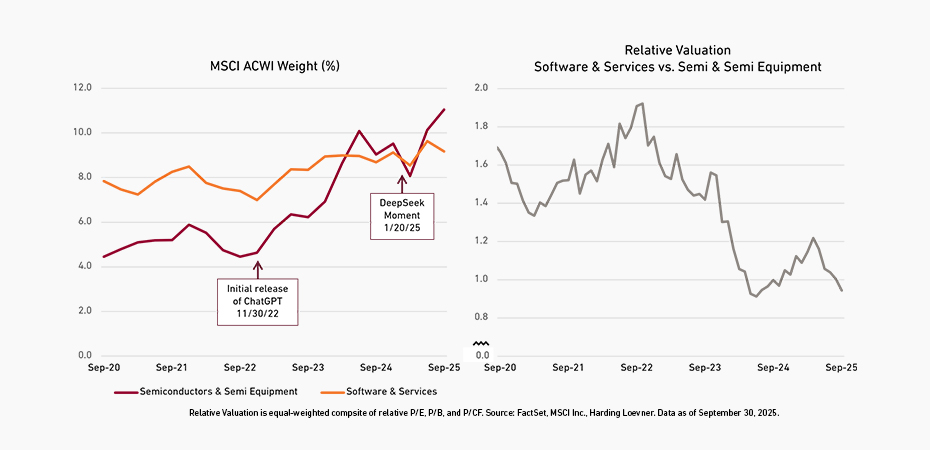The AI boom has reshaped global equity markets with remarkable speed. Since the launch of ChatGPT in late 2022, investors have gravitated toward perceived AI winners, leading to increasingly concentrated market returns. This concentration, in turn, stokes the fear of missing out and further fuels the chase for a small cluster of stocks.
High-momentum stocks are defined as those that have outperformed over the trailing 12 months. As the chart above shows, the outperformance of high-momentum stocks has persisted, exceeding the returns of low-momentum stocks by 45 percentage points this year and extending a three-year stretch of exceptional gains.
This pattern of returns has shifted how industries within the Information Technology (IT) sector are represented in the MSCI ACWI Index, as illustrated in the chart below. Over the past three years, semiconductor and semiconductor-equipment stocks have seen their share of index double, with markets rewarding the sellers of the “picks and shovels” needed for the buildout of AI infrastructure. Meanwhile, stocks of software and services companies, which previously dominated the IT sector, have been overtaken by semiconductors and semiconductor equipment. Their valuation premiums have also disappeared, as investors foresee disruption from AI.

Yet many software and services businesses may be more resilient than the market appreciates. Synopsys, Adobe, and Accenture are among those adapting quickly. Synopsys is a leading provider of electronic design automation software that sits at the heart of chip design, enabling the very hardware that’s powering AI. Adobe, whose design and editing software is deeply embedded in creative industries, surpassed this year’s target for AI-related revenue months ahead of schedule. Accenture is re-training tens of thousands of consultants to help its clients make effective use of AI tools.
If AI is to permeate the broader economy, it will require not just chips, but also the software and services to deploy them. The companies above are just a few examples. The market is pricing in profound disruption for businesses that may instead be well positioned to adapt and share in the economic gains. ∎





